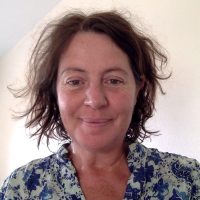View this post on Instagram
We are at a turning point as a collective.
If we choose to allow the changes happening all around us to expand the vessel of our awareness, we can bring hope, energy, and love to ourselves and the collective.
If we choose to expand our consciousness, we can help bring in changes through hopeful activism and creative collaboration.
But if we succumb to fear, we allow ourselves to contract and can make it harder for those changes to happen.
What is happening in the collective right now is colored by our actions and expectations. At any given moment, this immense suffering can shift into an enlightened state of awareness. We cannot know what each and every individual is experiencing, but we can know and choose to plant seeds of inner peace and calm into our own hearts and minds.
The panic, anger, and fear that result from fixating solely on events in the outer world only serve to exacerbate inner turmoil and confusion. There is absolutely no doubt that the war in Israel and Gaza, for example, is one of the worst points of darkness occurring in our world right now, not least because our collective attention is tuned into the suffering of innocent Palestinians, many of whom are women and children, the elderly, and the ill.
And it is this disproportionate number of civilian casualties (along with the suffering of so many Israelis) that evokes a feeling of anger, rage, helplessness, and other extreme emotions. Yet, inside these emotions is an intelligence that points to the imbalance of power in the region, and perhaps in the collective. It may also echo our own developmental imbalances and our inner journey.
These emotions can evoke our own trauma, because of how interconnected we are in the collective, so it is important not to lose sight of this truth and how it impacts all living beings—regardless of who they are. There is no benefit whatsoever to choosing sides or teams when it comes to suffering. There is no numbers game that can even out the score. A single child who suffers or dies through war can be seen and felt as a child of all of us.
The egoic comfort that results from choosing sides feeds a beastly ghost of self-righteousness. As much as we hate or vilify an individual, which then becomes a group, we can never close the door on them as long as they are alive. And this goes for everyone, everywhere, always.
But how? How is it possible to hold empathy for both sides at once? And how can we feel compassion for those who drop the bigger bombs?
There are so many ways. For example, in Buddhism it is the karma of the aggressor who harms with malice and destroys the present and future equilibrium for tranquility and peace. It is the aggressor who carries the burden of fear, trauma, and survival. That does not excuse anyone or any action. But it is a perspective worth noting.
Also, we need to ask ourselves, what have we done or not done to contribute to this atmosphere of aggression? Either inside our own thought patterns, or our actions and words that we broadcast to the world? What is it to actually have “skin in the game,” to be personally involved in the conflict?
We can ask ourselves: is my anger, rage, and aggression helping to calm or inflame the situation? We can role play and imagine how it might feel to be in the other’s skin. We can also ask ourselves if our language is contributing to the peace or the conflict? How are our actions directly or indirectly affecting not only ourselves, but the entirety of our lives.
To be an activist is not the same as to be a sacred activist.
A sacred activist understands that the inner environment of our bodies, minds, and hearts contribute to the outer environment of our homes, communities, and planet. We understand that the condition of our awareness or consciousness colors how we experience our lives, how we relate to ourselves and others, and how our presence can be healing or harmful. We have the responsibility of choosing to shift our inner environment for the collective good.
But how? All the contemplative practices that call for a witnessing of ourselves make space for this to happen. When we become aware of our own awareness, we gain the perspective that we truly are not only responsible for ourselves but deeply connected to each other. Therefore, how we feel inside can contribute to the feelings of others. Simply put, inner peace can amplify global peace. Surely it is easier and more realistic to strive for mastery of oneself if we understand how this is reflected in the collective.
Yoga, meditation, and sound healing are all ancient techniques that are also proven methods for training our awareness to become more sensitive to our inner needs. Yoga can teach the body how to be strong and stable, meditation can allow the feelings to flow with ease and freedom, and sound healing can amplify our intentions toward inner peace and a global shift.
It is my heartfelt hope and intention that whoever reads this will personally turn toward the inner path of sacred activism, or some journey of inner witnessing, and take the steps toward shifting their awareness.
~
“Peace is present right here and now, in ourselves and in everything we do and see. Every breath we take, every step we take, can be filled with peace, joy, and serenity. The question is whether or not we are in touch with it. We need only to be awake, alive in the present moment.” ~ Thích Nhất Hạnh, Peace is Every Breath
~
{Please consider Boosting our authors’ articles in their first week to help them win Elephant’s Ecosystem so they can get paid and write more.}
~











Read 7 comments and reply